Hesketh Bank WwTW (2017)
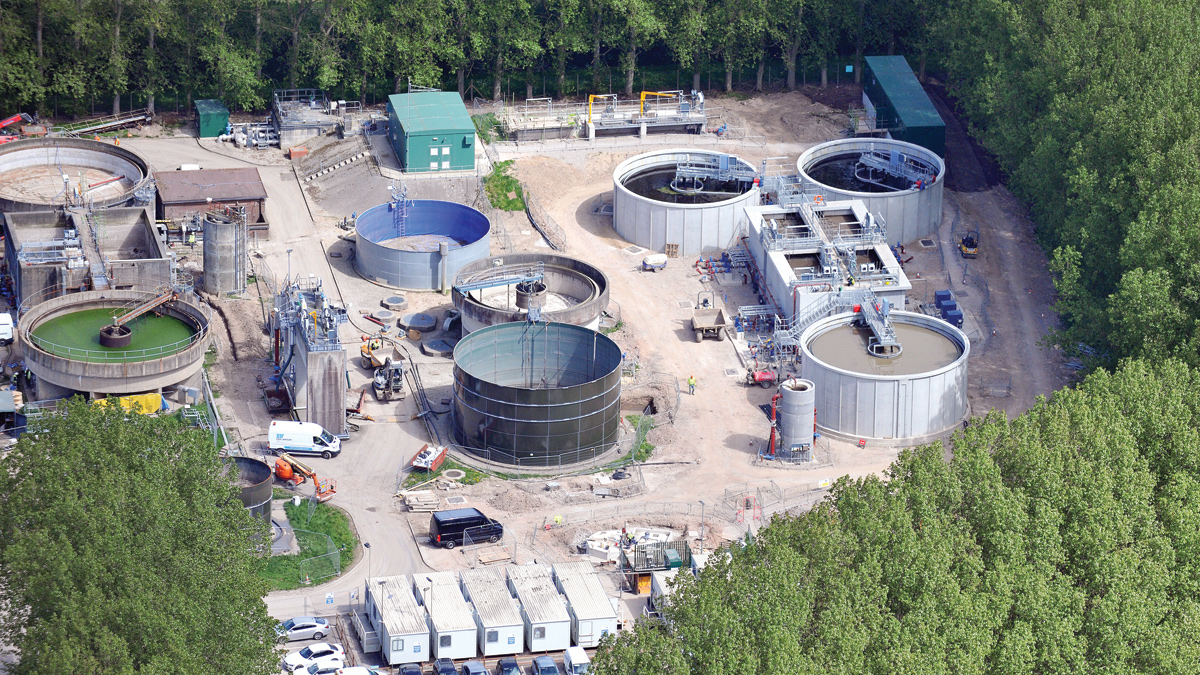
Hesketh Bank - new treatment stream in operation - Courtesy of C2V+
Hesketh Bank Wastewater Treatment Works (WwTW) serves a population of approximately 5,800. The catchment of this Lancashire village is mainly residential and much of the surrounding land is dedicated to agriculture. The treatment works is on the edge of the village and is situated close to the River Douglas, near its confluence with the Ribble Estuary. The treatment works has recently seen a £4.5m investment by United Utilities (UU). This investment was driven by the requirements of the Bathing Waters Directive to enable the operation of the storm tanks overflow, to meet the discharge frequency limits. Additionally, minor operational improvements were identified to be addressed as part of the solution.
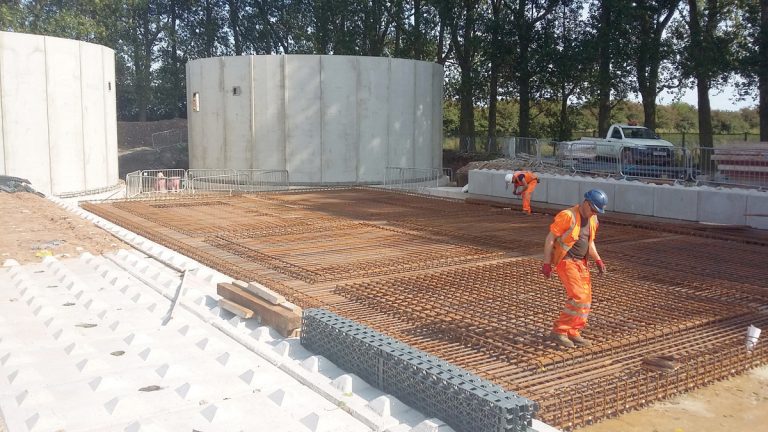
Installation of ASP base reinforcement – Courtesy of C2V+
Project scope
The project was awarded to C2V+, a joint venture between CH2M and VolkerStevin, in November 2015 following a competitive tender as a design and build contract. The proposed solution comprised:
- Replacing the existing process with a new treatment stream.
- The new treatment stream to operate with a flow-to-full treatment (FFT) of 64 litres per second (l/s), (the existing treatment stream in contrast served a FFT of 36l/s). This provided the treatment (process and hydraulic) capacity, which meant the storm water could be managed with a small increase in installed storm tank volume.
- The revised FFT reflected the existing consented 6DWF and allowed the solution to work within the existing consent regime, which includes BOD of 25mg/l, SS of 60mg/l (both as 95-percentiles) and UV disinfection applied to all flow that passes through the main treatment stream.
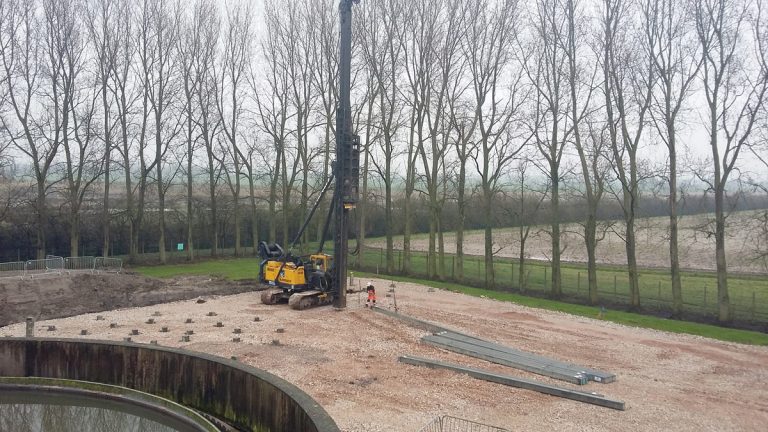
(left) 175 (No.) PCC piles being driven to depths of up to 19.5m to support the PST, ASP, FSTs and storm return pumping station and (right) installation of ASP base reinforcement – Courtesy of C2V+
Details of the treatment plant forming the new works is as follows:
- Replacement inlet works screens (one of the improvement drivers): Huber Technology screens.
- Updated control for control of FFT: Eric Wright Water/Adsyst
- A new 13.5m diameter precast concrete primary settlement tank: Shay Murtagh Precast.
- A new precast concrete aeration tank 18m x 9m x 5m deep (split into two lanes) and 2 (No.) new 12m diameter precast concrete final tanks: Shay Murtagh Precast.
- Scrapers for the settlement tanks: TOT Technical.
- Fine bubble diffused aeration system: Suprafilt.
- Return activated sludge (RAS)/surplus activated sludge (SAS) and other pumping ancillaries: Eric Wright Water.
- New ultraviolet plant (existing discharge consent requirement) to treat the revised FFT: Trojan Technologies.
- Conversion of old process tanks to storm storage duty (reusing assets with residual life): C2V+/Eric Wright Water.
- Installation of mixing equipment to storm tanks, motor control centre (MCC) and control systems: Lloyd Morris Electrical Ltd.
- New tanks & tank refurbishment: Stortec Engineering Ltd
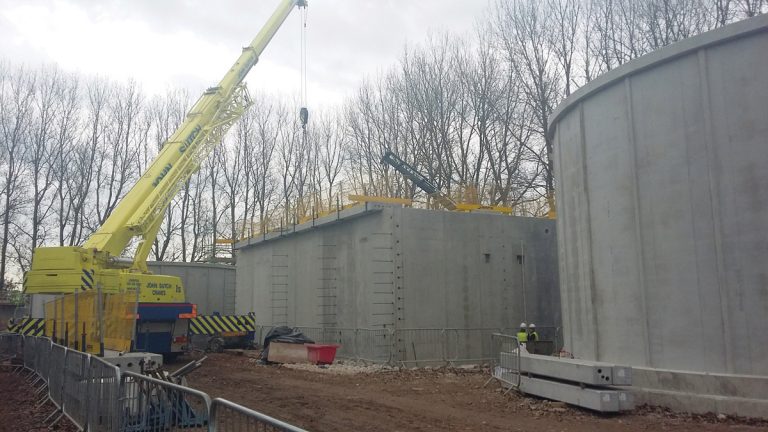
View of PST, ASP and FST. Placement of ASP PCC walkways prior to post-tensioning – Courtesy of C2V+
Biological treatment process details
Activated sludge is at the heart of the process solution but the aeration basin design has been tailored to suit site needs, by having a two lane basin with three process cells in each lane:
- RAS stabilisation zone.
- Non-aerobic zone.
- Aerobic cell with reduced diffuser array.
The purpose of the proposals is to achieve a settleable sludge and low OPEX/TOTEX costs for a plant that will experience a wide range of hydraulic loading. At times of high hydraulic loading, the sewage will be relatively weak due to dilution from the storm flow element.
Therefore the intended impact is to address known operational issues to reduce time and effort maintaining and operating the site to deal with the settleability issues and its associated impacts on the process units.
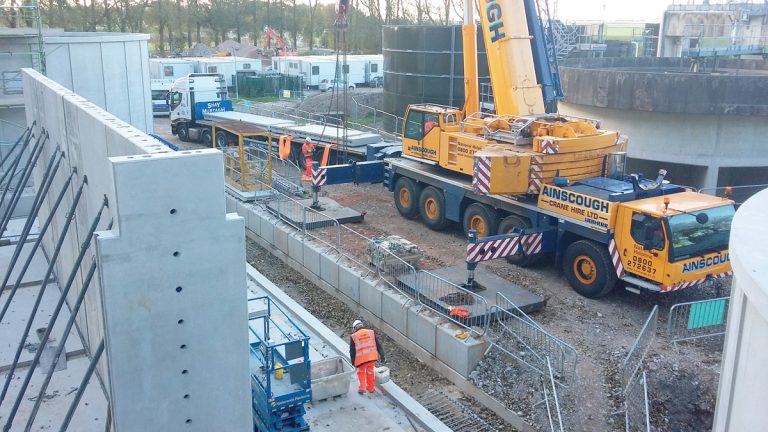
Erection of precast wall units ASP walls and – Courtesy of C2V+
C2V+ selected an anaerobic selector (as compared to an aerobic selector), primarily based on its experience with them providing reduced SSVIs as compared to aerobic selectors. The significantly reduced energy usage associated with eliminating the high DO aerobic selector leads to an operational cost saving in comparison. The aerobic portion of the aeration basin is still designed to provide satisfactory oxygenation in order to meet the site consent.
This configuration, particularly the adoption of an anaerobic selector zone, was innovative for UU and not covered by their original design standards. UU worked with C2V+ to understand the proposal prior to its acceptance.
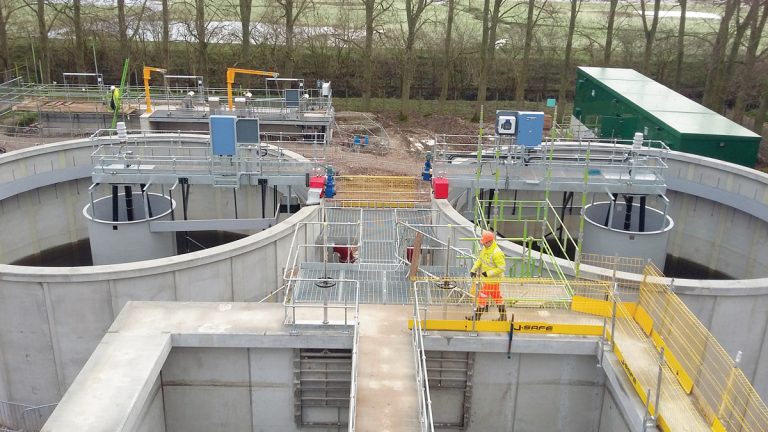
Activated sludge plant aerobic zones and completed final settlement tanks – Courtesy of C2V+
The activated sludge system was sized with sufficient volume and blower capacity to allow the plant to function well should the primary settlement tank not be used due to planned maintenance works (e.g. scraper inspection). In addition, two final tanks were provided to allow similar operational flexibility.
Due to logistical constraints on site, proximity to customers and issues with congestion, there was a need to minimise construction time on site. This resulted in the team having to begin construction of the final settlement tanks first and work their way out from the back. An off-site solution was proposed using the Dutchland system, of which the project at Hesketh Bank is one of the first uses in the UK.
Dutchland tanks consist of precast concrete wall units manufactured off-site and post-tensioned in situ to achieve high residual compression. The precast wall units were placed on a reinforced concrete base slab, which is in turn supported by piled foundations due to uneven ground conditions.
These, together with the post-tensioned precast concrete settlement tanks (which incorporated a precast concrete internal launder channel), enabled the project to beat the programme and budget allocations for in situ construction. All of the tanks passed their water tests first time and in the minimum period.
DfMA
Many Design for Manufacture and Assembly (DfMA) benefits were recognised on the Hesketh Bank project. Using DfMA meant the wall units for the 12m diameter FSTs could be erected in a single day. In contrast, using traditional formwork for the walls would have proven extremely difficult in such a tight working area, and a larger working platform would have been needed, causing further access issues.
Pre-stressing the reinforcement also reduced the depth of the walls for the PST and FSTs, reducing material costs and wastage. Using PCC panels reduced delivery traffic on the site entrance road, which is a quiet residential country lane. The factory-produced units are of a higher quality finish than that which would be achieved by in situ construction and eliminate site wastage, concrete sampling and curing times before striking formwork.
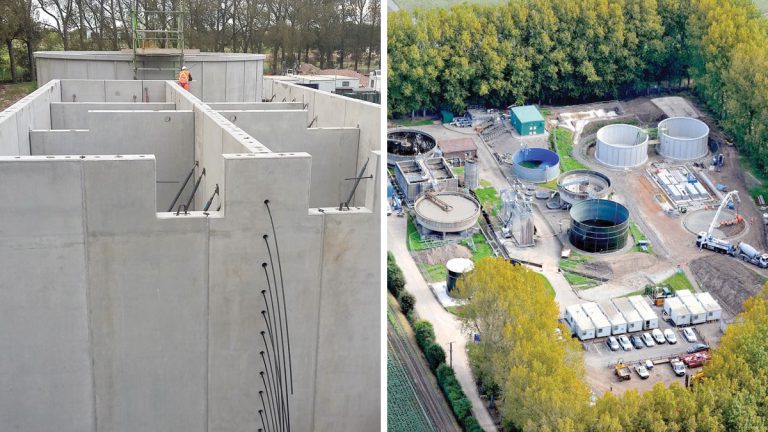
(left) Activated sludge plant walls progression and (right) new process plant under construction – Courtesy of C2V+
Reductions made
Using DfMA saved a total of 12 cumulative weeks project time and 25% of the cost of traditional methods. The system also reduced customer impact and waste, as well as improved health and safety, reducing the amount of time spent on site. In addition to the high quality finish, the precast wall units have proven to be more effective in achieving water tightness; active reinforcement results in less cracking and greater longevity. This process also allowed construction schedules to overlap and reduced weather-related constraints.
C2V+’s customer team took an active role in assisting the delivery (site) team to build early links with the neighbours. This was particularly important as the site is served by an access track shared with a number of residents and landowners. The site team made efforts to ensure that a 10 mph speed limit was respected at all times, that the neighbours were kept aware of when the construction traffic might be heavy and that the surface of the track was kept in a reasonable condition.
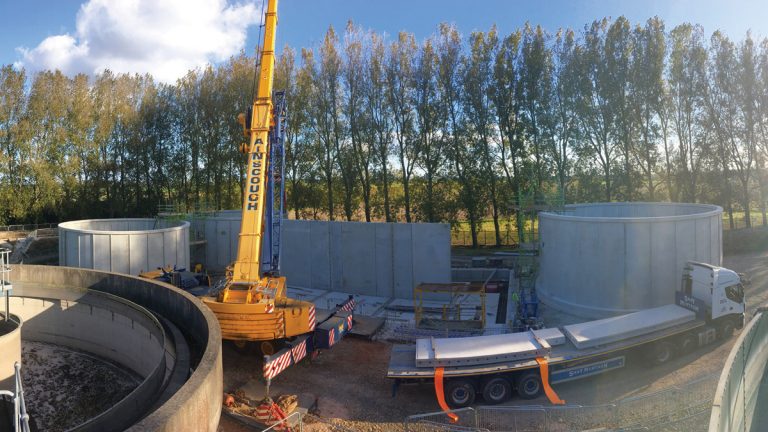
Positioning of wall units lifted directly from delivery wagons and placed into the tank – Courtesy of C2V+
Summary
Working with Shay Murtagh Precast, one of the precast concrete tank suppliers, affirmed the benefit of using a supplier with their own labour force who understood the product and know where to focus their effort for best effect. The walls have good line and level, due to the attention to detail in setting up the packing onto which the units were placed, with the water test passing first time.
UU is a strong advocate for the application of DfMA and has been delighted with the outcome at Hesketh Bank. C2V+ tier two partner Eric Wright were key to the successful installation of the mechanical and electrical equipment along with the control automation, and worked alongside the site team in a collaborative approach enabling the completion targets to be achieved.
Works have progressed on time and completion is anticipated at the end of July 2017. Flow through the works is being treated efficiently and the quality of the effluent being produced is meeting or is of a higher quality than the standards required meeting the regulatory discharge consent.












